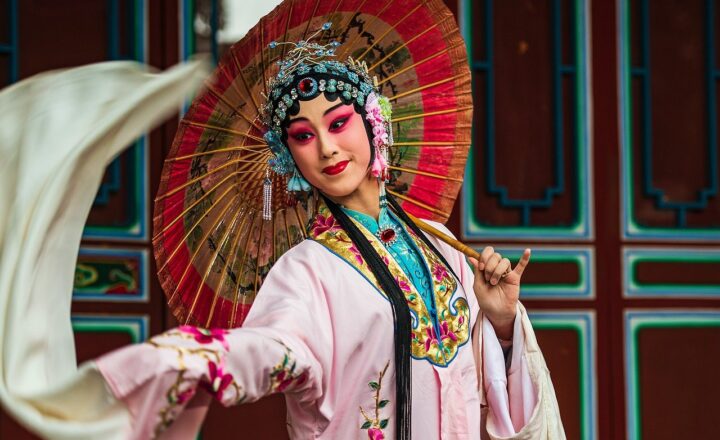The History of Art: Classic vs. Contemporary and Their Lasting Impact
November 15, 2024

Art has always played a vital role in human civilization, serving as both a reflection of society and a catalyst for change. As we delve into the rich tapestry of art history, we encounter two distinct yet intertwined realms: classic art and contemporary art. This article explores the evolution of these two art forms, their defining characteristics, and the lasting impact they have imparted on culture and society.
1. Defining Classic Art
Classic art, often referred to as traditional or historical art, encompasses a wide range of periods and styles, each contributing to the narrative of artistic development. Generally, classic art can be categorized into several major movements:
- Ancient Art: This includes artworks from civilizations such as the Egyptians, Greeks, and Romans. These works often focused on mythology, religion, and the human form. Notable examples include the sculptures of Michelangelo and the frescoes of Raphael, which emphasize beauty, proportion, and human emotion.
- Renaissance Art: Spanning the 14th to 17th centuries, the Renaissance marked a revival of classical ideas and techniques. Artists like Leonardo da Vinci and Titian pioneered techniques like linear perspective and chiaroscuro, elevating realism in their works. This era celebrated humanism and the exploration of nature.
- Baroque and Rococo Art: The late 16th to the 18th centuries ushered in the Baroque and Rococo movements, characterized by drama, emotion, and vigorous movement. Artists such as Caravaggio and Peter Paul Rubens created works that exuded grandeur and tension, while Rococo artists like François Boucher focused on lightness and ornate detail.
Classic art serves as a historical document, preserving the thoughts, beliefs, and aesthetics of past cultures. Its influences can still be seen in today’s art world, where the principles of composition, technique, and subject matter continue to inform modern artists.
2. Defining Contemporary Art
Contemporary art, on the other hand, refers to art created from the late 20th century until the present day. Marked by a departure from traditional structures and themes, contemporary art embraces a diverse array of forms, materials, and concepts. Key characteristics include:
- Diverse Mediums: Contemporary artists utilize various mediums, including digital art, installation, performance, and mixed media. This experimentation reflects broader societal changes and technological advancements.
- Conceptual Focus: Many contemporary works prioritize ideas and concepts over aesthetics. Art becomes a vehicle for commentary on identity, politics, and culture, promoting dialogue and critical thinking.
- Global Perspectives: Unlike classical art, contemporary art often transcends geographical boundaries, embracing diverse cultural influences. This global exchange fosters inclusivity and allows for a multitude of expressive voices in the art world.
Prominent contemporary artists include Damien Hirst, Yayoi Kusama, and Ai Weiwei, each challenging our definitions of art and provoking thought about society’s issues.
3. The Impact of Classic Art on Society
Classic art has considerably shaped social and cultural development through its storytelling and ability to evoke emotions. It served as a historical repository that documented significant events and the human experience:
- Cultural Identity: Art has been integral to forming cultural identity across various societies. Classic works reflect the values, beliefs, and heritage of the people who created them, providing insight into historical societies for future generations.
- Art as Patronage: The commissioning of classic art reflected societal structures, where wealthy patrons like the Medici family influenced the artistic landscape. This patronage allowed for the flourishing of artistic skills and innovation, contributing to a shared cultural legacy.
- Symbolism and Religion: Much classic art was heavily influenced by religious themes, serving as a tool for education and inspiration within communities. These artworks often communicated moral and ethical standards, shaping societal values and beliefs.
Classic art holds an undisputed significance in preserving the essence of various societies and continues to inspire modern artists and thinkers.
4. The Impact of Contemporary Art on Society
Contemporary art reflects the fast-paced, globalized world we live in today, often challenging the status quo and prompting critical discussions. Its impact extends beyond aesthetics:
- Social Commentary: Contemporary artists harness their platform to address pressing sociopolitical issues like climate change, identity politics, and systemic inequality. Art becomes a mode of resistance, raising awareness, and sparking activism.
- Redefining Spaces: Many contemporary artists reimagine public spaces through installations and interventions, transforming urban landscapes and encouraging community engagement. Art becomes accessible to a broader audience beyond traditional exhibitions.
- Cross-disciplinary Engagement: Contemporary art often overlaps with other fields such as science, technology, and social movements, fostering interdisciplinary collaborations that challenge conventional boundaries and promote innovative thinking.
The dynamic nature of contemporary art keeps it relevant in the discourse on cultural identity, activism, and societal change.
5. The Interrelationship Between Classic and Contemporary Art
While classic and contemporary art may seem divergent, they are two sides of the same coin. The evolution from one to the other demonstrates the continual dialogue that drives artistic expression:
- Influence and Inspiration: Contemporary artists often draw inspiration from classical works, interpreting and re-contextualizing them for modern audiences. This interplay fosters innovation and reflects the unchanged human experience of emotions and ideas.
- Preservation of Techniques: Many contemporary artists maintain traditional artistic techniques while incorporating modern influences. This blend preserves historical methods while allowing for fresh perspectives and dialogues about art’s role in society.
- Cultural Reference Points: Classic art serves as cultural reference points that contemporary artists engage with, critiquing or celebrating aspects of tradition that resonate in today’s context.
The synergy between classic and contemporary art highlights the relevance of history in informing the present, showcasing the enduring impact that art has on society.
6. Conclusion: The Lasting Impact of Art
The history of art reveals a fascinating lineage that continues to shape our understanding of culture, society, and ourselves. Whether through classical masterpieces or contemporary innovations, art remains an indispensable part of human expression. As we navigate a rapidly changing world, the ability of art to inspire, provoke thought, and evoke emotions underscores its significance.
In embracing both classic and contemporary art, we recognize their shared narrative and profound impact. Art not only mirrors the world we inhabit but also shapes the very fabric of our identities, values, and collective memories. As we move forward, the conversation between these two realms of art will undoubtedly inspire future generations of artists and audiences alike.







